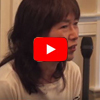Emotional
Blog / Produced by The High Calling
She had me with the story of the pink dress. The pink dress for a child she had never met—a child she had prayed for, dreamed for, and wondered about. A child named Xiomara Michelle. She had me with the pink dress and the shopping for her sponsored child, but when Ann Voskamp visited Xiomara with Compassion in September and blogged about her time in Guatemala, she gave me a face—a tiny body to see the pink dress on. And I was moved to help.
According to Heath and Heath in this week’s chapter of Made to Stick: Why Some Ideas Survive and Others Die, by sharing Xiomara Michelle’s story in this way Ann has hit on a very powerful tool in making a message stick: The Mother Teresa Principle.
If I look at the mass, I will never act. If I look at the one, I will.
Personal
Research done in 2004 at Carnegie Mellon University reveals that Mother Teresa is not the only one who feels this way. When given the opportunity to donate to charity, people who were given information about a single young girl—Rokia--as opposed to a list of statistics that outline the enormity of problems for children in Africa, the people who read about Rokia donated more than twice as much.
The researchers wondered if people were given both pieces of information—Rokia’s story and the statistics—would they give more? They did another study. The results? Those who received both bits of information gave significantly less than those who received Rokia’s story only.
The researchers theorized that thinking about statistics shifts people into a more analytical frame of mind. When people think analytically, they’re less likely to think emotionally. And the researchers believed it was people’s emotional response to Rokia’s plight that led them to act.
Further research proved this theory true.
The results are shocking. The mere act of calculation reduced people’s charity. Once we put on our analytical hat, we react to emotional appeals differently. We hinder our ability to feel.
And without emotion, our messages are far less sticky.
The Power of Association
One barrier to stickiness discussed in this chapter is what the Heath brothers call semantic stretch. Semantic stretch is the term researchers give to the tendency to overuse any idea or concept that delivers an emotional kick. What parent hasn’t grown annoyed at their teen’s current pet slang word? (Like, totally, dude.) Such overuse dilutes the value of these words and impairs their ability to impact others.
The most basic way to make people care is to form an association between something they don’t yet care about and something they do care about…Over time, associations get over used and become diluted in value…This emotional arms race creates problems for people who are trying to make others care…
To avoid semantic stretch, we have to find alternate ways to form associations, as Jim Thompson, the founder of the Positive Coaching Alliance, did to redeem the word sportsmanship. Thompson noted that the dilution of the word sportsmanship had evolved to mean less about chivalrous pro-active behaviors during sports events and more about not doing something bad. Thompson knew that people still cared about good sportsmanship—just not in its current watered-down form. He decided to find a way to redefine what good sportsmanship is.
He came up with a plan that embraced good behavior and encouraged real sportsmanship. To avoid the current weak version of the word sportsmanship he had to call it something different. He called it Honoring the Game. Decreased numbers of fouls during games and increased team morale following Honoring the Game training indicate that Thompson’s strategy is working. Real sportsmanship is improving.
Self
Two other ways of using emotion to make a message effective are to appeal to self-interest (What’s in it for me?) and identity. We run into our old friend The Curse of Knowledge here, and also get a crash course in Abraham Maslow’s hierarchy of need.
The brothers Heath tell us that if one way to make people care is by appealing to what matters to them, what matters more than their own person? But appealing to self interest can be tricky, say Heath and Heath. This is because people have a tendency to attribute a drive toward lower need fulfillment (security, physical) to others and higher need fulfillment (self-esteem) to themselves.
This bias can cause us to miss important opportunities. Take the Pegasus chow hall for example. A military mess hall in Baghdad, Pegasus is more like five star dining. This is because of the man in charge. Floyd Lee sees feeding our nation's military as a mission.
As I see it, I am not just in charge of food service; I am in charge of morale.
Lee sees his job as more than a means to make a living. He's not in Maslow's basement at all.
Lee's story reminds me of another dining hall in which I have recently dined--that of Laity Lodge. One of the ideas behind Laity Lodge is to create the opportunity for transformation. It's a beautiful retreat facility. The lodge's chef and Director of Operations, Tim Blanks, takes great joy in watching the pleasure of others as they delight over his food and the details he provides for their comfort.
I understand transformation, says Tim, who has been through AA. You can deal with a lot of your stuff over the dining table. I think the table is the most important piece of furniture we have here.
In summary, the Heath brothers ask, how do we make people care about our ideas?
We get them to take off their Analytical Hats. We create empathy for specific individuals. We show how our ideas are associated with things that people already care about. We appeal to their self-interest, but we also appeal to their identity—not only to the people they are right now but also to the people they would like to be.
The Heath brothers conclude that empathy emerges from the particular, not the pattern. This brings us back to the Mother Teresa Principle.
Floyd Lee, Tim Blanks, Xiomara Michelle. All part of the mass. Each one with their own special story.
Previous Made to Stick Posts:
Chapter four: Credible
Chapter three: Concrete: You Can Walk Around On It
Chapter two: Unexpected Journey
Chapter one: Simple
photo by Ann Voskamp, used with permission. Post by Laura Boggess.





